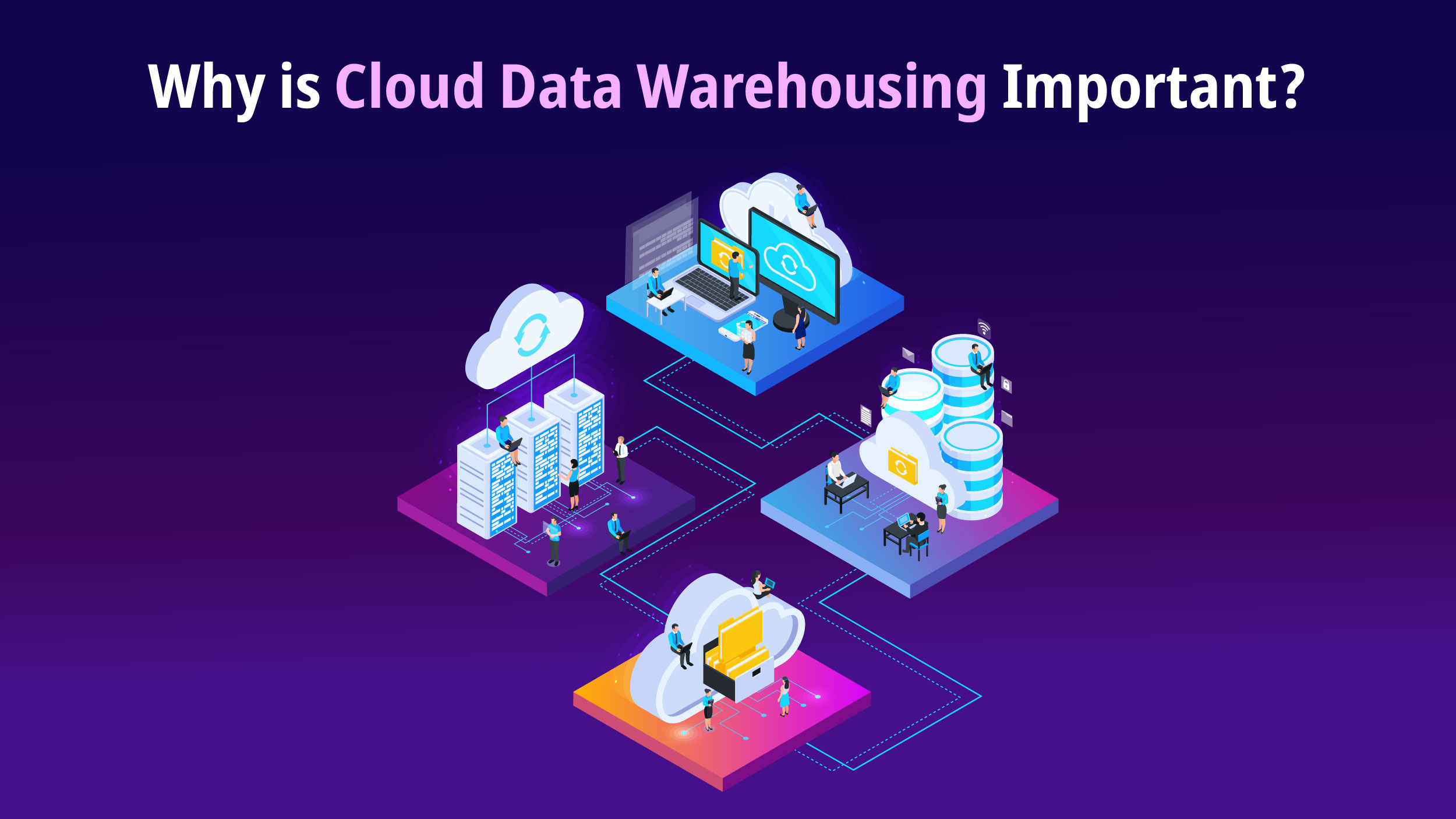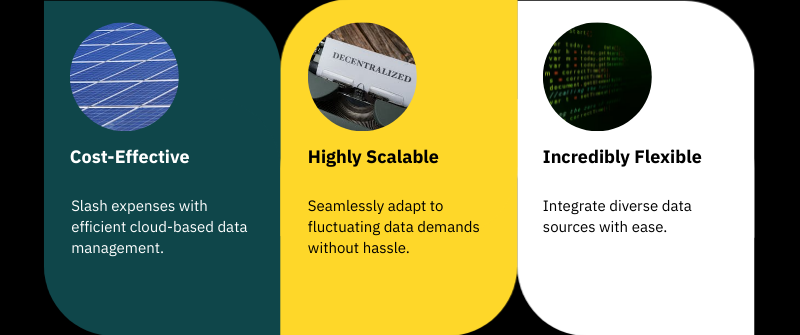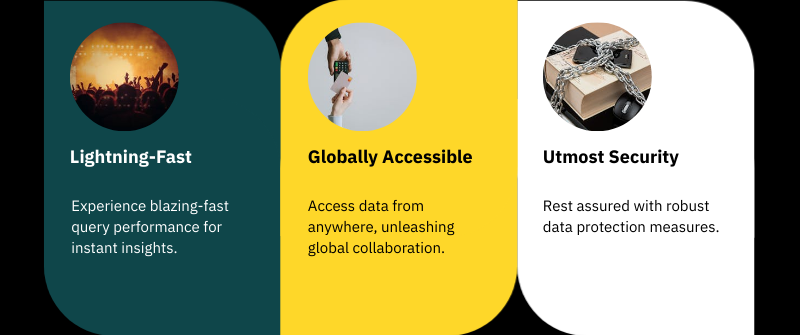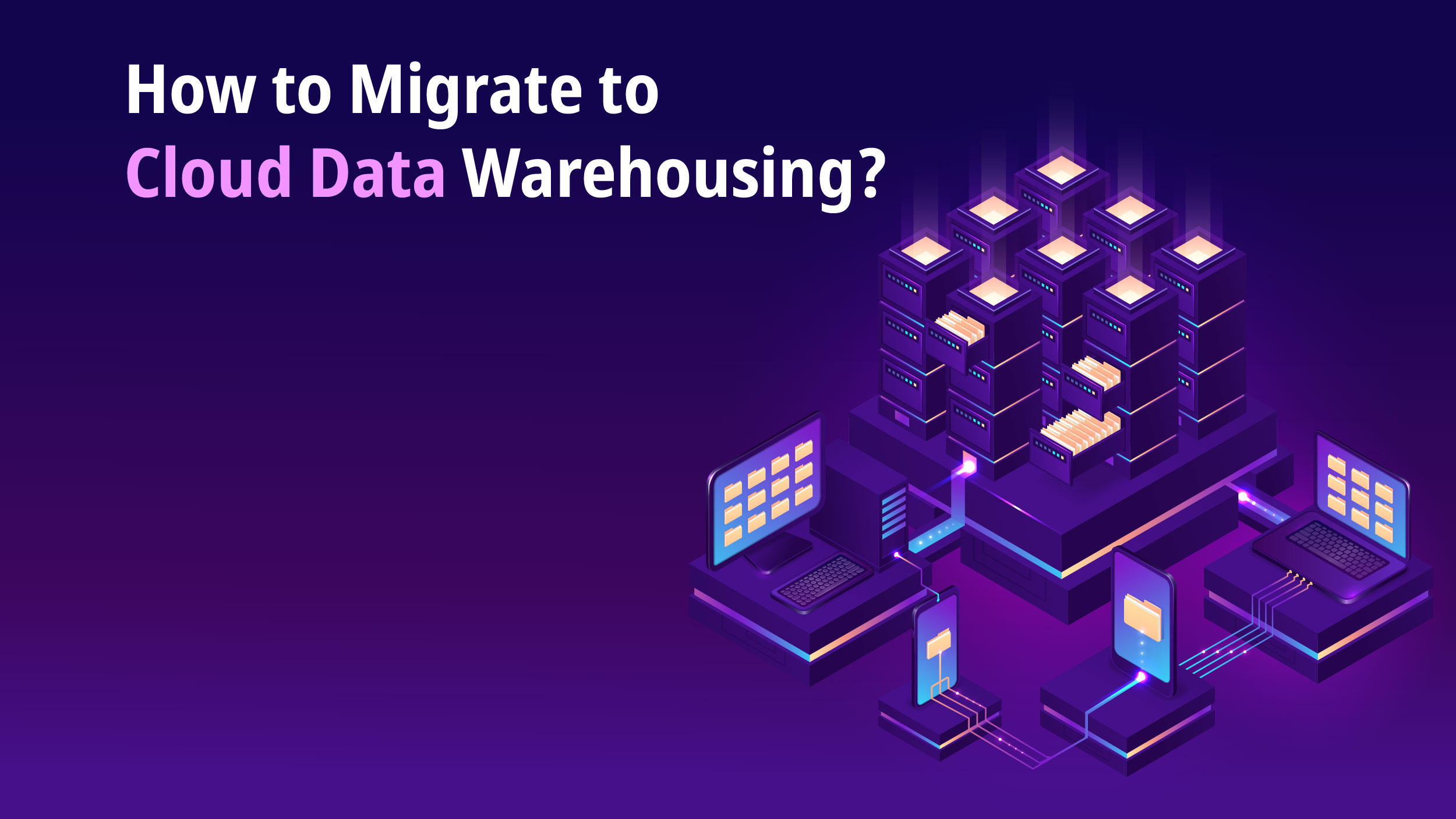Traditional data warehouses struggle with growing data demands, scalability, and limited accessibility. About 328.77 million terabytes of data are generated every day. This massive volume becomes challenging for companies.
This is where cloud data warehousing comes into play. It enables storing and managing large volumes of data in a public cloud environment. Let’s understand the benefits, and how it differs from traditional approaches.
What Is Cloud Data Warehousing?
Storing and managing large volumes of data through a public cloud is known as cloud data warehousing. This way, businesses can access it in order to find patterns or any other helpful information that will help them in their operations. Contrary to traditional corporate data warehouses that require physical frameworks, cloud data warehouses are adaptive enterprise-wide services that grow with your business and cost less.
All the data are placed together at one point on the internet so that they may be accessed by companies at any time from anywhere. It makes it possible for them to handle and study a huge amount of data without having to go into details. Snowflake, Google BigQuery, Amazon Redshift and other platforms make it easy for firms to manage and integrate all sources of their information.
Cloud Data Warehouse Key Features
At present, there exist numerous cloud computing types with various benefits associated with each. Nevertheless, most of them have certain things in common. Here are the top six:
- Distinction between Compute and Storage: With cloud data warehouses, you can access your data from anywhere and maintain it centrally located. Businesses that need to handle massive volumes of data with flexibility and agility will find this extremely helpful.
- Integration and Management of Data: Prominent cloud data warehouses with powerful data integration features facilitate connections to a wide range of data sources. They include strong data management tools, such as the ability to execute queries, create and manage datasets, and define permissions.
- Data Storage: Cloud-based solutions offer flexible storage options, allowing you to store as much data as you need. It also includes features like compression and deduplication to save space and boost performance.
- Performance: These warehouses are designed for high-speed performance. They use techniques like columnar storage and in-memory caching to make data access faster. Additionally, they support parallel query processing to further enhance speed.
- Database Management: Creating of libraries, setting of permission for users to access facilities, and handling of inquiries. Beside this, the disaster recovery and automatic backups are provided to make the data recoverable according to their policy.
- Security and Compliance: There is enough measure put in place concerning security when it comes to cloud data warehouses and additionally, the data is secured when in transit as well as when in storage. They also show you how to handle and control access, and audit, which in essence means that if you do not want some people, specific people, gaining access to some information you have, then those people should not be able to get access to it in the first place.
Also Read: The A to Z Of Data Integration Tools In 2023
Why is Cloud Data Warehousing Important?

As the name implies, data warehousing is the process of managing and storing data. Earlier, businesses were unprepared for the enormous volume of data that was produced as they expanded.
Cloud data warehousing helps with just that. It is no longer constrained by the need for physical data centers. It allows you to grow or shrink your warehouse according to business needs and budget.
This is achieved due to the presence of heterogeneous data sources including Internet of Things (IoT), finance systems, customer relationship management (CRM), and others.
Since the data stored in cloud warehouses is streamlined and unified, it can be used to support numerous business intelligence use cases.
Benefits of Using Cloud Data Warehousing 

Traditional vs Cloud Data Warehouses Explained
Below mentioned are the main difference between traditional and cloud based data warehouses:
- Location: While cloud data warehouses are remotely hosted on the cloud, traditional data warehouses are physically installed within the organization’s internal networks. This goes further to show that cloud data warehouses are highly scalable, and more easily accessible than the traditional segment.
- Cost: Cloud data warehouses are considerably cheaper than other storage options. In this case, the cloud is self-service, meaning that you only consume the services you need and there is no need for the procurement of expensive hardware as is the norm with traditional models.
- Flexibility: Cloud data warehouses are offering more flexibility for use. An advantage with cloud solutions also is that one can up- and downgrade easier than in the traditional installations since they are less fixed.
- Scalability: In the cloud, scaling up is more seamless. Including more data or users? Simple and hassle-free—no need to purchase additional gear.
- Security: Stronger security measures are a feature of cloud data warehouses. Compared to traditional installations, data kept in the cloud is less vulnerable to breaches.
- Maintenance: Compared to typical setups, cloud maintenance is a piece of cake. You don’t need to bother about maintaining software or hardware because the supplier takes care of it all.
- Integration: Cloud data warehouses offer smooth integration with other applications. Cloud-based data makes it simple to synchronize with other tools and systems.
How to Migrate to Cloud Data Warehousing?

- Evaluate current data warehouse: Analyze existing warehouse infrastructure, identify issues, and areas for improvement.
- Define objective: Understand why you want to migrate to the cloud. Is it for scalability, saving cost, better accessibility or others?
- Choose the right platform: Identity the right data warehouse solution that fits your business goals. Check the pricing, security, integration ability, pros and cons, etc.
- Plan migrate data: Come up with a detailed migration plan by identifying which data set needs to be migrated, its sequence, develop testing and data validation procedures.
- Organize data in advance of migration: Prior to transferring your data to the cloud, clean and optimize it. Data transformation, schema modifications, and data quality assurance may be required for this.
- Data security: Assure compliance and data security by putting in place the necessary security measures to guard your data throughout the transfer process. Think about access limits, encryption, and adhering to data privacy laws.
- Carry out the migration: Move your data from the on-premises data warehouse to the cloud data warehouse to start the migration process. Track the migration’s progress and take care of any problems or mistakes that appear.
- Test and validate: Verify the accuracy and integrity of the moved data. Verify through extensive testing that the cloud data warehouse fulfills your performance requirements and operates as anticipated.
Bottom Line
For businesses struggling with expanding their data storage, cloud data warehousing offers a promising solution. These systems make it easy and quick to access data, which is perfect for companies aiming to be efficient and nimble.
When deciding on the best platform, it’s important to think about things like how much it costs, how well it performs, the help you’ll get from the vendor, whether you might get locked in, and how easy it is to use. Experts expect that more and more businesses will choose cloud data warehouses in the future.




